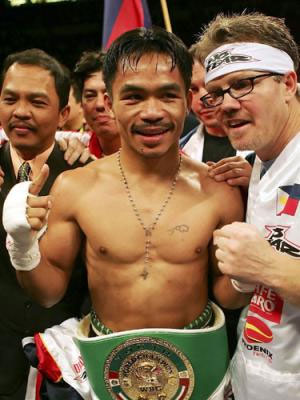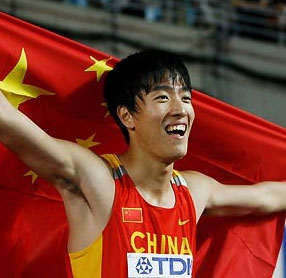
By Sheldon
The year was 2002 and the Houston Rockets had just announced they would select Yao Ming as the number one overall pick of the NBA draft. I was ecstatic. At the time, I was a middle school student and remember trying to find every opportunity to follow Yao Ming’s career.
My family didn’t have cable television back then, so instead I tried to stream the games live onto my computer– even if it meant downloading virus and spyware filled programs. When I finally found a live broadcast of the game, I usually ended up staring at a pixelated screen and the words “buffering” for hours.
Yao Ming led a new generation of Asian athletes into mainstream media. As the first Asian face I remember consistently seeing on TV, I envied him for his success as a prominent minority in a field with few Asians.
For me, a young teenager who grew up in the Caucasian-homogenized Midwest, seeing other Asians was rare. I had few people who shared a similar background that I looked up to so I naturally gravitated towards the NBA superstar.
However, truth be told, Yao Ming and I shared few similarities. He was 7’6″, I was 6’0″. He barely spoke English, and I barely spoke Chinese. His cultural background was mostly Chinese, while I was American – the definition of a 香蕉 (banana) as the Chinese would call me. Either way, I had few role models – I took what I could get.
During this time, other Asian athletes across virtually every sport began to attract international attention. In baseball, the Seattle Mariners signed Ichiro Suzuki of Japan in 2001. He recorded an astonishing 242 hits in his rookie season – more than any other MLB player since the 1930s.
 While Ichiro led Asian baseball players into the spotlight, a man from the Philippines was starting his career in professional boxing. In 2001, Manny Pacquiao made his first major appearance in the United States at the Las Vegas MGM Grand Garden Arena winning the International Boxing Federation Super Bantamweight World Title. Ten years later, Pacquiao would be named the number one pound for pound boxer in the world by almost every major news outlet.
While Ichiro led Asian baseball players into the spotlight, a man from the Philippines was starting his career in professional boxing. In 2001, Manny Pacquiao made his first major appearance in the United States at the Las Vegas MGM Grand Garden Arena winning the International Boxing Federation Super Bantamweight World Title. Ten years later, Pacquiao would be named the number one pound for pound boxer in the world by almost every major news outlet.
Internationally, the 2002 FIFA World Cup was underway and Asian teams began to soar up the rankings. Park Ji-Sung, a South Korean soccer player quickly made his name known by leading the Republic of Korea football team to the final four of the World Cup tournament. Soon after, the most successful English club football team, Manchester United, signed the South Korean star to play center midfielder where he still is today.
In the same year, K.J. Choi of South Korea won his first PGA Tour at the 2002 Compaq Classic of New Orleans. He has since established himself as Asia’s most successful golfer, spending 40 weeks in the top 10 of world rankings and recently winning the very prestigious 2011 Players Championship.
 Since the initial breakout of Asian athletes in 2001 and 2002, many more Asian athletes have risen to elite status. Liu Xiang’s 110 meter dash world record and gold medal performance at the 2004 Athens Olympics silenced critics who questioned whether Asians could compete among traditionally underrepresented sports like track and field.
Since the initial breakout of Asian athletes in 2001 and 2002, many more Asian athletes have risen to elite status. Liu Xiang’s 110 meter dash world record and gold medal performance at the 2004 Athens Olympics silenced critics who questioned whether Asians could compete among traditionally underrepresented sports like track and field.
Other stars such as Yi Jianlian, Daisuke Matsuzaka, and Y.E. Yang kept the momentum going, meanwhile at the Beijing 2008 Summer Olympics, China led the gold medal count. And yet, despite all these Asian successes, I still had not found a role model who grew up in America like me – until 2010.
Jeremy Lin was born in 1988, only two years before me. His father, a Chinese immigrant to America quickly fell in love with basketball and often brought Lin to the local Palo Alto, Calif., YMCA to shoot hoops. Similar to Lin, I too grew up going to the local YMCA almost every day to play basketball.
To me, Lin felt like a normal kid who could have been my friend growing up. Coupling great athleticism and work ethic, in the 2005-2006 season he led his high school basketball team, Mater Dei, to a 32-1 record and California State Division II title. Even though, Dana O’Neil of ESPN said, “Lin was the runaway choice for player of the year by virtually every California publication,” no Division I schools expressed serious interest in him – only Harvard and Brown guaranteed him a spot on their basketball team.
The 6’4″ guard proved his skeptics wrong by leading Harvard to their best season in school history, finishing his senior year with stellar statistics, including: 16.4 points per game, 4.4 assists per game, and 2.4 steals per game. However, once again Lin was overlooked, going undrafted in 2010. The Dallas Mavericks offered him a spot on their summer league, where by pure luck the starter was injured, giving him an opportunity to prove himself again to his critics. Lin showed that he could go head to head against the number one pick of the 2010 draft, John Wall, and excel both offensively and defensively.
 After watching Lin’s performance, his hometown team, The Golden State Warriors quickly signed him. Unsurprisingly, even as a Warrior, people still had their doubts and Lin’s minutes were limited. Only until the end of the season did people start believing in him, most notably Warriors head coach Keith Smart and former Warriors head coach Eric Musselman who said in an interview, “Unequivocally, Jeremy Lin is an NBA basketball player.” I had finally found a role model that grew up facing the same discrimination as I did, being a former athlete in volleyball, basketball, and swimming.
After watching Lin’s performance, his hometown team, The Golden State Warriors quickly signed him. Unsurprisingly, even as a Warrior, people still had their doubts and Lin’s minutes were limited. Only until the end of the season did people start believing in him, most notably Warriors head coach Keith Smart and former Warriors head coach Eric Musselman who said in an interview, “Unequivocally, Jeremy Lin is an NBA basketball player.” I had finally found a role model that grew up facing the same discrimination as I did, being a former athlete in volleyball, basketball, and swimming.
To finally solidify these trends, in the same year, Ed Wang, a 6’5″, 300 pound offensive tackle was drafted out of Virginia Tech by the Buffalo Bills to play in the NFL. Meanwhile, in the past few months, Li Na has also led a rise of tennis stars from Asia. This year, she finished as runner-up in the 2011 Australian Open and recently won the 2011 French Open, escalating her ranking to number three overall among female tennis players.
As I witness more and more Asian exposure in athletics, I wonder to myself: will this trend continue as more and more hidden talent is discovered among the colossal populations of India and China?
I often argue with friends who tell me the reason China won the most medals in the Beijing Olympics is because of their sheer population size. However, few realize that even though China does have a large population, only a fraction of them actually have the leisure time to participate in athletics with proper training and nutrition.
Many of these booming Asian countries lack structured athletic programs that can seek out talent at a young age from across the entire population. As a comparison, a huge number of American youth begin playing soccer at a young age. At least for me, the majority of my friends had the opportunity to play in club teams which allowed for the discovery of talented players.
Due to the sheer population size of many Asian countries, I believe this trend of successful Asian athletes will continue more rapidly than ever. In America, I witness more and more Asian parents allowing their children to deviate from intensive academic studying and piano playing to focus on developing their athleticism. As a result, we will also see more American-born Asians excelling in a wide variety of sports as well. Internationally, as Asian countries acquire more wealth, I suspect the number of Asian athletes to skyrocket, providing role models for the next generation of both foreign-born and American-born Asian children to look up to.
About Sheldon: Sheldon is a Chinese-American born in Madison, Wisconsin. He is currently a student at the University of Wisconsin – Madison double majoring in Biology and Chinese. He hopes to one day get his J.D./MPP and work on reshaping US-China foreign policy. Interests include writing, theater arts, and outdoor activities.
- Excited
- Fascinated
- Amused
- Disgusted
- Sad
- Angry








